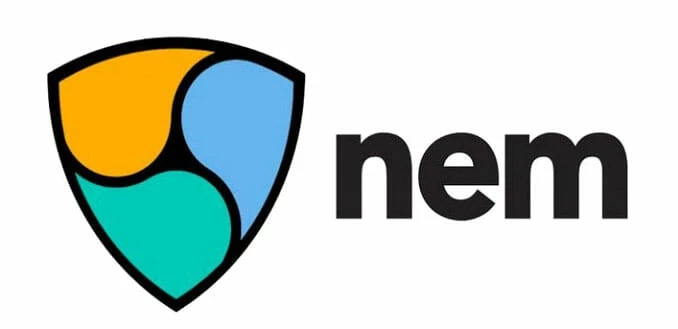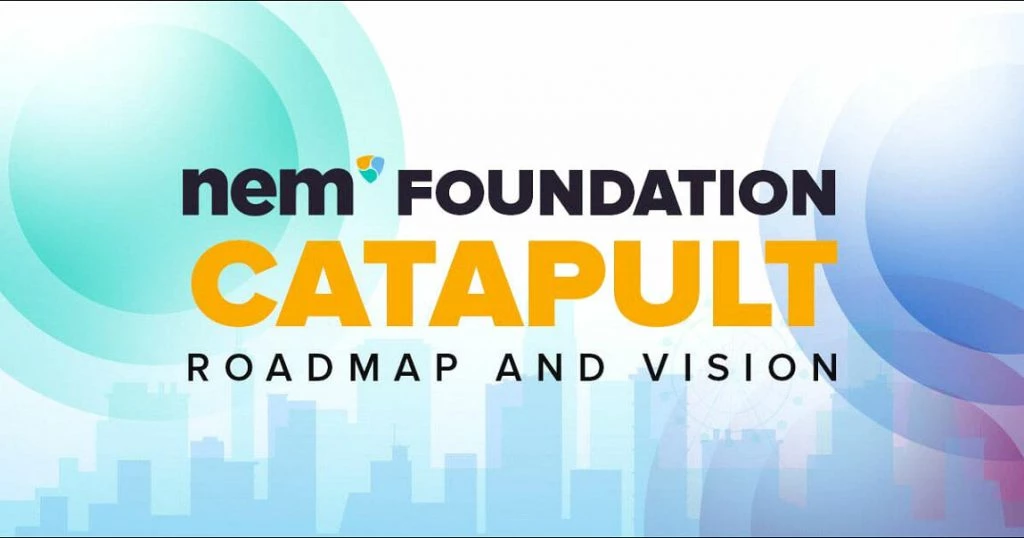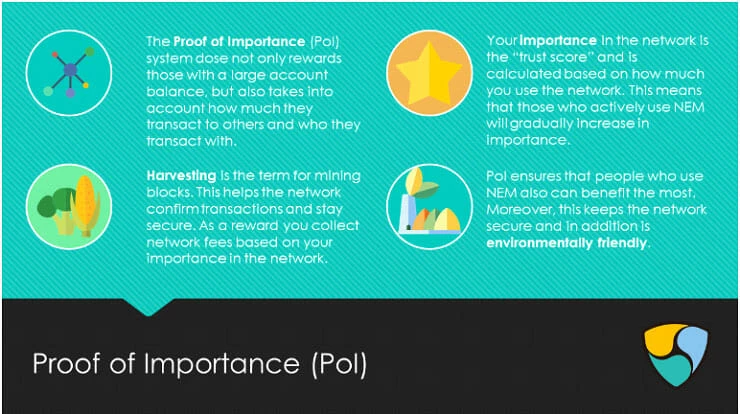
NEM (XEM)
Official Website: https://nem.io/
What is NEM?
Launched on 31st March 2015, NEM (New Economy Movement) was originally an NXT fork, before becoming a totally new codebase, written from scratch. Following the eventual dismissal of the NXT fork. NEM may be a dual-layer blockchain like Ethereum, except it absolutely was originally written within the popular programming language Javascript, but can now use almost any programing language, making it rather more accessible for developers to use the platform. Implementing a sensible Asset System, allows users the flexibility to form and implement their own unique and customizable smart contracts.
NEM (XEM) Statistics
Circulating Supply 8,999,999,999 XEM
Maximum Supply No Data
All Time High $2.09
Blockchain Statistics
Consensus Algorithm Proof-of-Importance (PoI)
Average Block Time 15 Seconds
Transaction Cost 0.05 XEM per 10,000 XEM / Cap = 1.25 XEM
Transaction Speed 4,000 tx/s
Mining CPU and GPU
Staking N/A
Block Explorer https://chain.nem.ninja/#/blocks/0
Social Media Statistics
Twitter Followers 216,000
Telegram Group Users 7,958
Reddit 18,300
Team
NEM was originally scheduled to be released in 2014 as a fork-out version of Nxt (NXT), after a Bitcoin Talk forum user called UtopianFuture got inspiration from NXT. However, in January 2014 there was an open entail participation on a forum to make a awfully new codebase and community-orientated cryptocurrency from the underside up. NEM.io Foundation is a Singapore-based non-profit organisation, founded in 2016 by Lon Wong. Nem.io has the goal of not just being another altcoin, but instead providing additional technologically and mathematically advanced blockchain solutions. 2 years later, Lon Wong resigned, and Kristof Van de Reck served as an interim president, until Alexandra Tinsman was voted in as president in December 2018. Together with this, the primary council’s term came to an end and a whole new council was selected by eligible members.
Roadmap
NEM is about to release a brand new core engine called Catapult, otherwise referred to as NEM 2.0. NEM describe it as ‘the industry’s most practical and secure blockchain for any quite business data’. Like most other upgrades they’re promising improvements on scalability and speed, but also look to bring new features. a number of these features include multi-layer multisignature accounts; native public and permissioned interaction, likewise as aggregated transactions.
NEM’s initial Catapult Pre-Test which is dubbed Dragon, was released in Q2 2019. This update included a brand new Harvesting Beneficiary, allowing each node to own the flexibility to line up a beneficiary public key to share a percentage of their harvesting rewards. Alongside this there have been changes to the inflation configuration and Multisignature Transactions. there have been also updates to integrate compatibility to Ledger and Trezor hardware wallets.
Q3 of 2019 has in the future, the Catapult Testnet called Elephant. After realising Proof-of-Importance (PoI) doesn’t involve smaller accounts to the extent that they originally intended, NEM are releasing a brand new Proof-of-Stake+ (PoS+). Hoping the algorithm will select harvesters more fairly, by determining an individual’s account stake within the system using three sub-scores: Stake Score, Transaction Score and Node Score. it’ll have more variables than a typical PoS, and may hopefully perform as PoI was intended to, correcting the ‘rich-get-richer’ problem that the majority industries face.
NEM shall have the Catapult Public Miannet Release sometime in Q4 of 2019. it’ll bring some features which will only be available on NEM Catapult, including having the ability to line white-lists and black-lists for accounts and tokens you would like your account to transact with. Also using aliases, like domain names, in several transactions so its clearer who you’re sending to. together with this lots of the previous improvements mentioned in ‘Dragon’ and ‘Elephant’ also will be exclusive to Catapult. Going further into the long run (2020+), NEM plan lots of improvement for mobile applications of their systems, along with; voting, delegated voting and mosaic stake voting.

Mining (Harvesting for XEM)
Unlike most other cryptocurrencies, NEM (XEM) uses a Proof-of-Importance algorithm, soon to be called Proof-of-Stake+ (PoS)+. Different to Proof-of-Work (PoW) during which the more computing power you’ve got the more likely you’re to retrieve the mining reward or Proof-of-Stake, where the more of a particular Cryptocurrency you own, the upper the possibility you’re to be rewarded more of that exact cryptocurrency. Proof-of-Importance balances the size between users, attempting to cut back the wealth gap. It considers what proportion a user transacts to others and who they transact with. Each user is given a trust score, calculated from their use of the network, which may gradually increase in ‘importance’. The PoS+ algorithm will make slight changes and choose harvesters more fairly, by determining an individual’s account stake within the system using three sub-scores: Stake Score, Transaction Score and Node Score. this may hopefully lead to a more even distribution of wealth, as anyone who contributes can gain extra XEM.
Vested Balance
Rewarding is achieved through the harvesting process (mining), which is a process within which a node will calculate blocks and that they are added to the blockchain. However, to try to to this you would like to possess a ‘vested’ balance of 10,000 XEM (approximately $475 as of 18/09/2019). The XEM you deposit into your account will gradually be vested, at a rate of 10% of your non-vested balance on a daily basis. as an example, a balance of fifty,000 XEM will have 5,000 XEM vested after 24 hours. the subsequent 24 hours, on the remaining 45,000 non-vested XEM, another 4,500 XEM (10% of 45,000) will become vested, and then you’ll only should wait 3 days before having the ability to reap. this can sadly mean that with only 10,000 XEM, you may never be ready to reach the minimum required vested amount to begin harvesting. Once you’ve got enough vested, you’ll start to reap either through local harvesting or delegated harvesting.
Local vs Delegated Harvesting
Harvesting is the process used to mine XEM through Proof-of-Importance (PoI), as explained above. You can harvest XEM using 2 different methods:
⦁ Local Harvesting – This method is initiated if you don’t activate delegated harvesting, and only this method only runs whilst your computer is running. Your account’s private key is passed to a locally running NIS (NEM Infrastructure Server) and is used to sign generated blocks with your private.

Delegated Harvesting – After activating delegated harvesting, you’ll be able to start harvesting on a remote NIS by initiating a block chain transaction and which costs 6 XEM. The advantage is that even after you pack up a NEM software on a neighborhood computer, the remote NIS will still harvest for your account. Additionally, to the present you’ll still harvest on an area NIS. Your private key will stay safe because NEM initiate an ‘importance transfer’. This suggests that a proxy account is made, and mapping for the importance score is distributed here, but the rewards earned are sent to the first account. The proxy account incorporates a zero balance, so no funds are stolen, and it’s unimaginable to transfer your importance score either.
Where to Store NEM (XEM)
https://nem.io/downloads/ provides many alternative wallets through their site for the storage of XEM, including their very own NEM wallet (available on Windows, Mac and Linux). you’ll be able to find mobile and desktop wallets from 8 other providers all featured on the location. Most of those wallets are unofficial and developed by the community to enhance and supply services on the open-source network. Prominent hardware wallet providers such as Trezor are integrated with XEM and a NEM wallet will come as standard on their devices. Dedicated Wallet providers like Exodus are great for storing, sending and receiving any XEM you’ll have already got or are looking to get. it’s always recommended that you simply ensure employing a secure wallet, create back-ups and store any sensitive recovery information. As well as, complete your own research and due diligence.
Where to Buy NEM (XEM)
You can Buy & Sell NEM (XEM) by heading over to the Buy Coins page of the BC Bitcoin website. NEM (XEM) is available on BC Bitcoin trading against major fiat currencies: GBP and EUR. You can also view our NEM buying guide here for more information.
Conclusion
Since NEM was officially released they need created many innovative methods compared to lots of other coins. a number of which include their unique Proof-of-Importance (soon to be PoS+) consensus algorithm, delegated harvesting and multi-layer multisignature accounts. Created on a awfully community orientated belief, with the initial idea coming from online talk forums. NEM have kept this want for a community driven cryptocurrency, allowing members to elect a brand new council team when need be, additionally as being very open and truthful with any mistakes they might’ve made or ideas that didn’t come to fruition as planned (like updating PoI), keeping users constantly updated. Currently sitting at rank 25 by market capitilisation, NEM contains a really strong support from the community because they believe the coin and therefore the foundations it had been created on, not allowing the network to be controlled by powerful ASIC-powered mining nodes or whales.
NEM (XEM) Resources
NEM Website: https://nem.io/
NEM Explorer: http://chain.nem.ninja/#/blocks/0
NEM GitHub: https://github.com/NemProject/
NEM Whitepaper: https://docs.nem.io/en#whitepapers-guides
Social Media
Twitter: https://twitter.com/NEMofficial
Facebook: https://www.facebook.com/ourNEM/
Telegram: https://t.me/nemred
Reddit: https://www.reddit.com/r/nem/
Disclaimer: The information provided in this article is intended for informational purposes only. It is the readers responsibility to complete their own research and due diligence.
